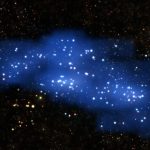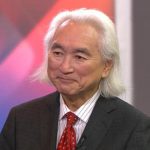Astronomers capture rare cosmic collision that’s a chance to ‘understand the chemistry of the universe’0
- From Around the Web, Space
- September 2, 2019
But astronomers almost missed collision that occurred 2.6 billion light-years away

But astronomers almost missed collision that occurred 2.6 billion light-years away

NASA’s Hubble Space Telescope discovered these electrically charged molecules shaped like soccer balls. These “buckyballs” could shed insight on the creation of stars and planets.

NASA’s Spitzer Space Telescope has revealed that some of the Universe’s earliest galaxies were brighter than expected. The excess light is a by-product of the galaxies releasing incredibly high amounts of ionising radiation. The finding offers clues to the cause of the Epoch of Reionisation, a major cosmic event that transformed the universe from being mostly opaque to the brilliant starscape seen today. The new work appears in a paper in Monthly Notices of the Royal Astronomical Society.

Comprehensive mission known as SPHEREx will collect data on more than 300m galaxies

A mind-bending new theory claims to make sense not just of the expanding universe and extra dimensions, but string theory and dark energy as well. According to the new model, proposed in the journal Physical Review Letters by researchers from Uppsala University, the entire universe is riding on an expanding bubble in an “additional dimension” — which

Proto-supercluster may contain thousands of galaxies

Isn’t it beautiful? This is an illustrated logarithmic scale conception of the observable Universe with the Solar System at the centre.

Physicists at CERN are working to determine why the equal amounts of matter and antimatter in the universe haven’t annihilated each other.

This map of the universe spans more than 500 million light-years and contains more than 100,000 galaxies.

The next time you come across a knotted jumble of rope or wire or yarn, ponder this: The natural tendency for things to tangle may help explain the three-dimensional nature of the universe and how it formed.



